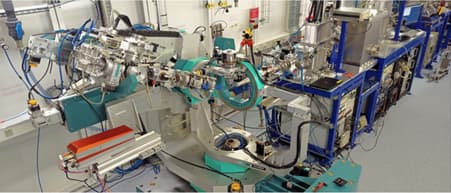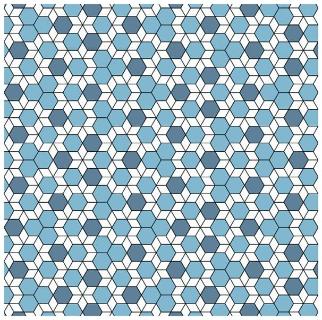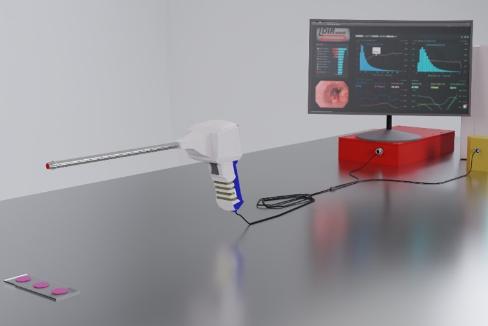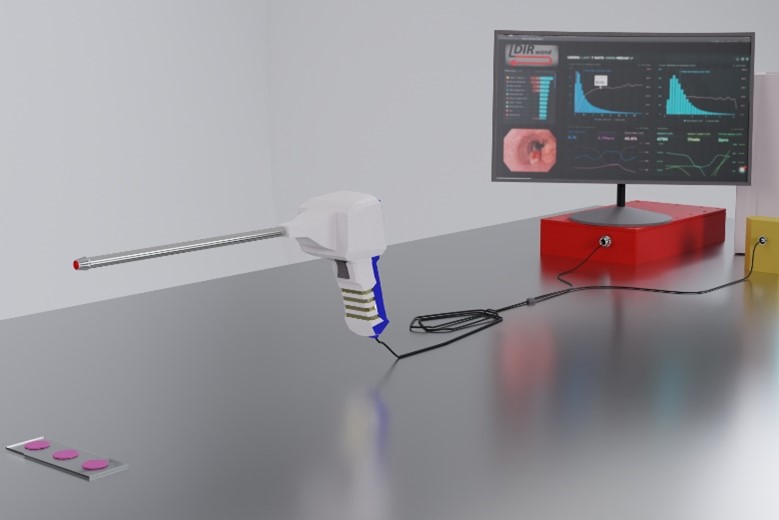Research Themes
Learn more about our Research Themes within Condensed Matter Physics
Advanced characterisation
XMaS Beamline at Grenoble:
Dr Laurence Bouchenoire (Research Staff, Grenoble), Dr Yvonne Grunder, Prof Chris Lucas, Dr Hem Raj Sharma, Mr Paul Thompson (Research Staff, Grenoble), Dr Didier Wermeille (Research Staff, Grenoble)
XMaS is an EPSRC funded National Research Facility supporting the UK X-ray Materials Science communities. It is managed by the Universities of Liverpool and Warwick and provides free at the point of access to synchrotron radiation at the European Synchrotron Radiation Facility (ESRF) in Grenoble (France). A wide range of sample environments allow a diverse set of experiments to be performed using energies in the 2.1 to 40 keV range.
Techniques available include: diffraction; resonant x-ray scattering, grazing incidence measurements, spectroscopy and small angle scattering.
There are two calls for beam time proposals per annum, more information may be found here.

X-ray diffraction:
Dr Jon Alaria
We have advanced lab-based x-ray diffraction facilities in the form of a Rigaku Smart Lab diffractometer, capable of monochromated studies, powder diffraction, grazing incidence and pole figure mapping.
For further information, please visit: Link
Contact: xrd@liverpool.ac.uk
Advanced characterisation personnel:
Dr Jon Alaria, Dr Laurence Bouchenoire (Research Staff, Grenoble), Emeritus Prof Vin Dhanak, Dr Yvonne Grunder, Prof Chris Lucas, Mr Paul Thompson (Research Staff, Grenoble), Dr Didier Wermeille (Research Staff, Grenoble)
Advanced materials
Bio - and soft matter-printing - Dr Joe Forth
Magnetic materials and structures - Dr Liam O’Brien
Quasicrystals and quasiperiodic media - Dr Sam Coates, Prof Ronan McGrath, Dr Hem Sharma
The group specializes on quasicrystals and quasiperiodic media. We utilize surface science techniques to explore intermetallic quasicrystals, with a focus on surface diffusion and molecular adsorption (below top). We are also involved in fabricating and investigating new aperiodic tilings, in particular, the properties of tilings which share rotational symmetries with periodic systems (below bottom).


Surface phenomena of quasicrystals (top), Aperiodic tiling with rotational symmetry elements (bottom)
Advanced materials personnel:
Dr Jon Alaria, Dr Joe Forth, Dr Liam O’Brien
Chemical and Electrochemical Physics
Chemical physics of reaction dynamics - Prof Brianna Heazlewood
Our research examines chemical reaction dynamics at low temperatures. We use laser cooling and ion trapping techniques, alongside external magnetic and electric fields, to control the properties of ions and neutral species. In addition to carrying out experimental measurements, we also develop models of collision environments and devise strategies for optimising experimental parameters.
Electrochemical interfaces - Dr Yvonne Grunder, Prof Chris Lucas
This group investigates the fundamental organisation and charge distribution of electrochemical interfaces, e.g. the arrangement and structure of aqueous ions at the interface with a metallic surface. This demands a combined approach using a) electrochemical underpotential deposition measurements from cyclic voltammetry and b) in-situ grazing incidence x-ray diffraction measurements of liquid-metal interfaces. Correlation between the two provides unique insights into fundamental electrochemistry.
Chemical and electrochemical physics personnel:
Dr Yvonne Grunder, Prof Brianna Heazlewood, Prof Chris Lucas
Imaging and medical diagnostics
One research is currently focussed on the development of the Liverpool Diagnostic Infrared Wand (LDIR Wand), a medical device that will provide an accurate and automated assessment of a variety of cancerous tissues. It assesses a small number of key chemical biomarkers to characterise tissue. These key biomarkers are initially determined by analysing the IR images generated by the LUMOS II, using a patented machine learning algorithm developed within the University of Liverpool. An early prototype of the LDIR Wand is being used to demonstrate the potential of this technology by determining the likelihood of an oral lesion later transforming into cancer. The core technology is being further developed for a variety of applications and settings.

Imaging and medical diagnostics personnel:
Dr Steve Barrett (Hon Research Fellow), Dr Paul Harrison (Research Staff), Dr David Martin, Dr Paul Unsworth (Research Staff), Prof Peter Weightman
Collaborators:
Professor Richard Shaw, Professor Keith Hunter, Dr. Asterios Triantafyllou and Dr Janet Risk, Liverpool Head and Neck Cancer Centre.
Dr Vijay Sharma Clinical Director, Cellular Pathology. Consultant Histopathologist, Royal Liverpool and Broadgreen University Hospitals.
Professor Sarah Coupland, George Holt Chair in Pathology, Honorary Consultant Histopathologist Eye & Vision Sciences, Liverpool Ocular Oncology Research Group.
Solar energy conversion
Solar photovoltaic materials and devices - Prof Ken Durose, Dr Jon Major, Dr Laurie Phillips
We specialise in thin film materials and devices for photovoltaic solar energy conversion. Our group has the capacity to synthesize new and emerging materials and measure their fundamental physical properties in either thin film or bulk crystal form. We then go on to design and fabricate lab-scale photovoltaic solar cells. We seek improvements in performance by researching the efficiency limiting aspects of the devices and then by making experimental improvements to them. In recent years our focus has shifted towards antimony selenide-based absorbers whereas our former focus was cadmium telluride. We also have capabilities and expertise in other chalcogenide, oxide and perovskite semiconductors.
Materials physics for solar energy - Emeritus Prof Vin Dhanak, Prof Tim Veal
We use surface electronic spectroscopy and optical methods to determine underpinning physical properties of new and emerging solar energy materials and interfaces.
Hybrid nanomaterials for hydrogen generation and nanophotonics - Dr Frank Jaeckel
Our research is focused on the preparation and advanced optical characterization of hybrid nanomaterials (metals, semiconductors, organics) for applications in renewable energy, nanoplasmonics and nanophotonics. We are interested in the preparation and fundamental photophysical characterization of hybrid nanomaterials for applications in renewable energy, nanoplasmonics and nanophotonics.
Hybrid metal-semiconductor nanomaterials can be used for photocatalytic hydrogen generation and other solar fuels as part of a green and sustainable energy supply. Our approach is via fundamental photophysics. Hybrid metal-organic nanomaterials can be used to manipulate a range of material properties and processes by making use of their localized surface plasmon resonances. We are particularly interested in manipulating processes such as Raman scattering, and charge and energy transfer.
Solar energy conversion personnel:
Emeritus Prof Vin Dhanak, Prof Ken Durose, Dr Frank Jaeckel, Dr Jon Major, Dr Laurie Phillips (Research Staff), Prof Tim Veal
